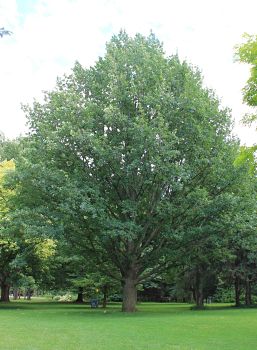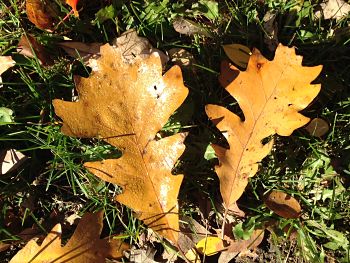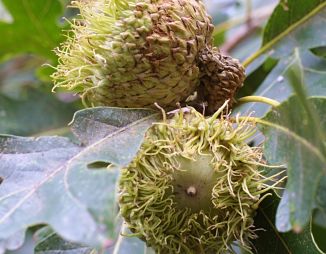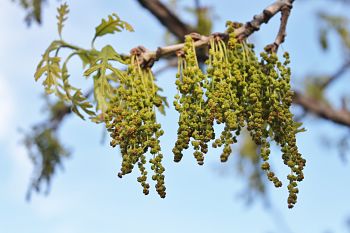The bur oak is a moderate to large species of oak tree that can grow 18 to 30m (60 to 100’) tall. It grows at a slow pace and can live for over 300 years. In fact, it’s said that a bur oak holds the record for the biggest and oldest tree in Toronto at 35m (115’) tall with a 1.7m (5.5’) wide trunk, and is estimated to be 350 to 400 years old! It lives on the property of a lucky homeowner in the Annex area. It is a tough species that, once established, it is able to survive drought and even resist fire!

The bur oak has a straight growing trunk with a large circular crown. Think of those round puffy tree drawings from elementary school - that’s the shape, and they’re dense enough to provide great shade on sunny days.

A characteristic of all white oak family species, of which the bur oak is categorized, are their leaves with rounded lobes. The bur oak’s are irregular with varied wavy tips, creating an unbalanced overall form that can grow between 15 and 30cm (6 and 12”) long. In autumn the bur oak’s leaves can change to a variety of amazing colours, from a rusty bronze to yellow. These fallen leaves and twigs can be used in mulch and compost, a great way to recycle instead of hauling it out as yard waste on garbage day. As a bonus, they repel pests like grubs and slugs!

The bur oak gets its common name from the burr-like fringe bristles that grow on the cup of the acorns it produces; thankfully the acorns do not cling to fur or hair like burrs do. The acorns of the bur oak tree are a huge asset to local wildlife; many animals eat these acorns, including mammals such as squirrels, gophers, chipmunks, raccoons, and even black bears! Birds like blue jays, woodpeckers, wild turkeys, and wood ducks eat them too. Moose, elk, white-tailed deer and porcupines consume the leaves, branches, and bark. If the acorns are roasted or boiled they can be eaten by humans too!

You may not think of oak trees as a pollinator’s paradise, but hundreds of different species are able to become established and call this type of oak tree their home. Their catkin-type flower clusters are full of pollen and are an early food source for many pollinators in springtime.
Are you looking for a strong independent tree that provides food and shelter for a variety of wildlife? Have a yard that’s looking plain, or maybe need to replace an old tree that has moved on? Maybe you’d like to add some diversity to your pollinator garden? Consider the bur oak, it’s a slow and steady tree that’s sure to keep your property an amazing green space for generations. Sign up for our Backyard Tree Planting Program today to book a consultation with one of our arborists to find out of the bur oak is the best tree for you!
Jessica Jeronimo is LEAF’s Communications Assistant. She is currently working on a 12-week internship with the organization.
